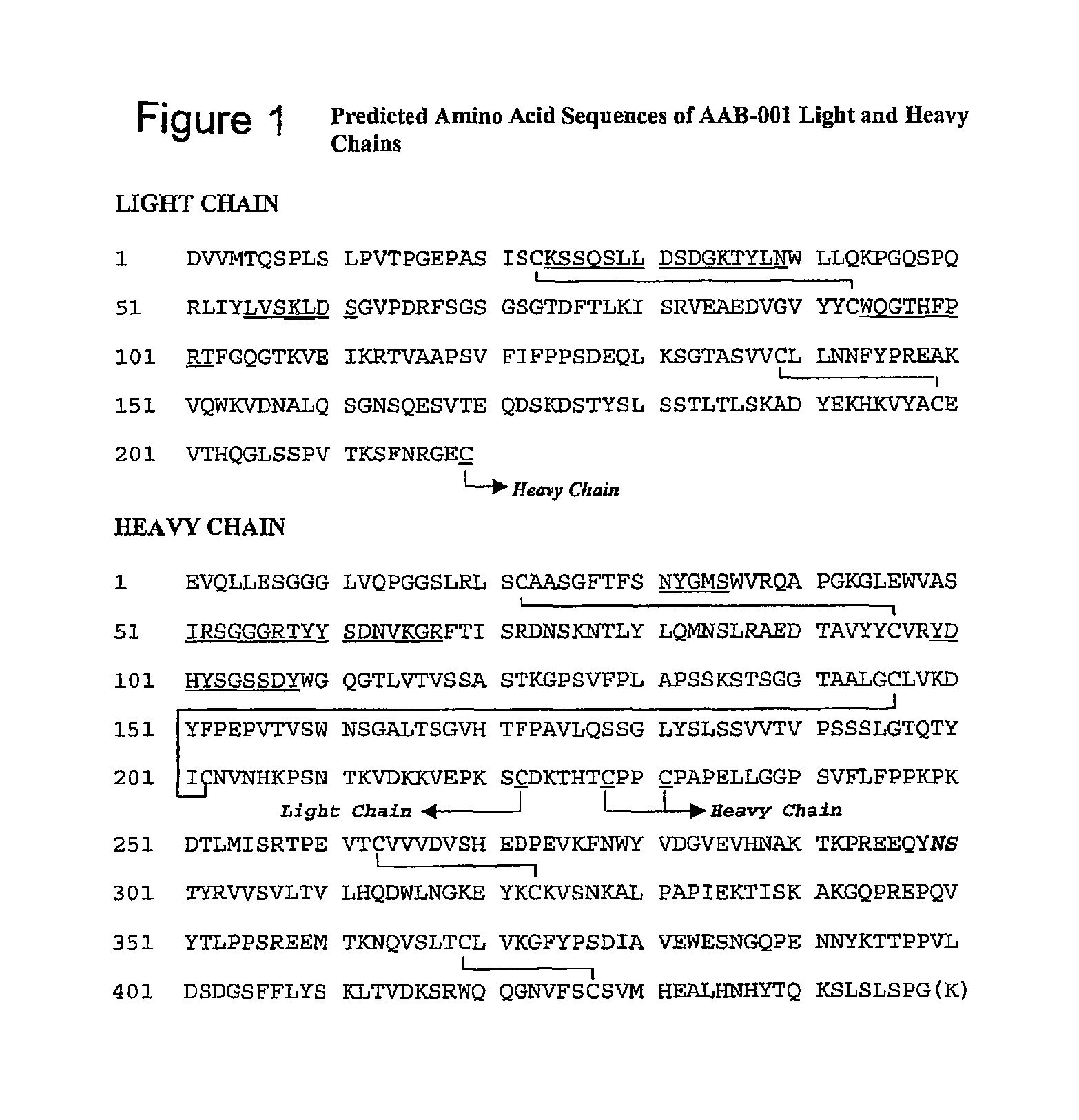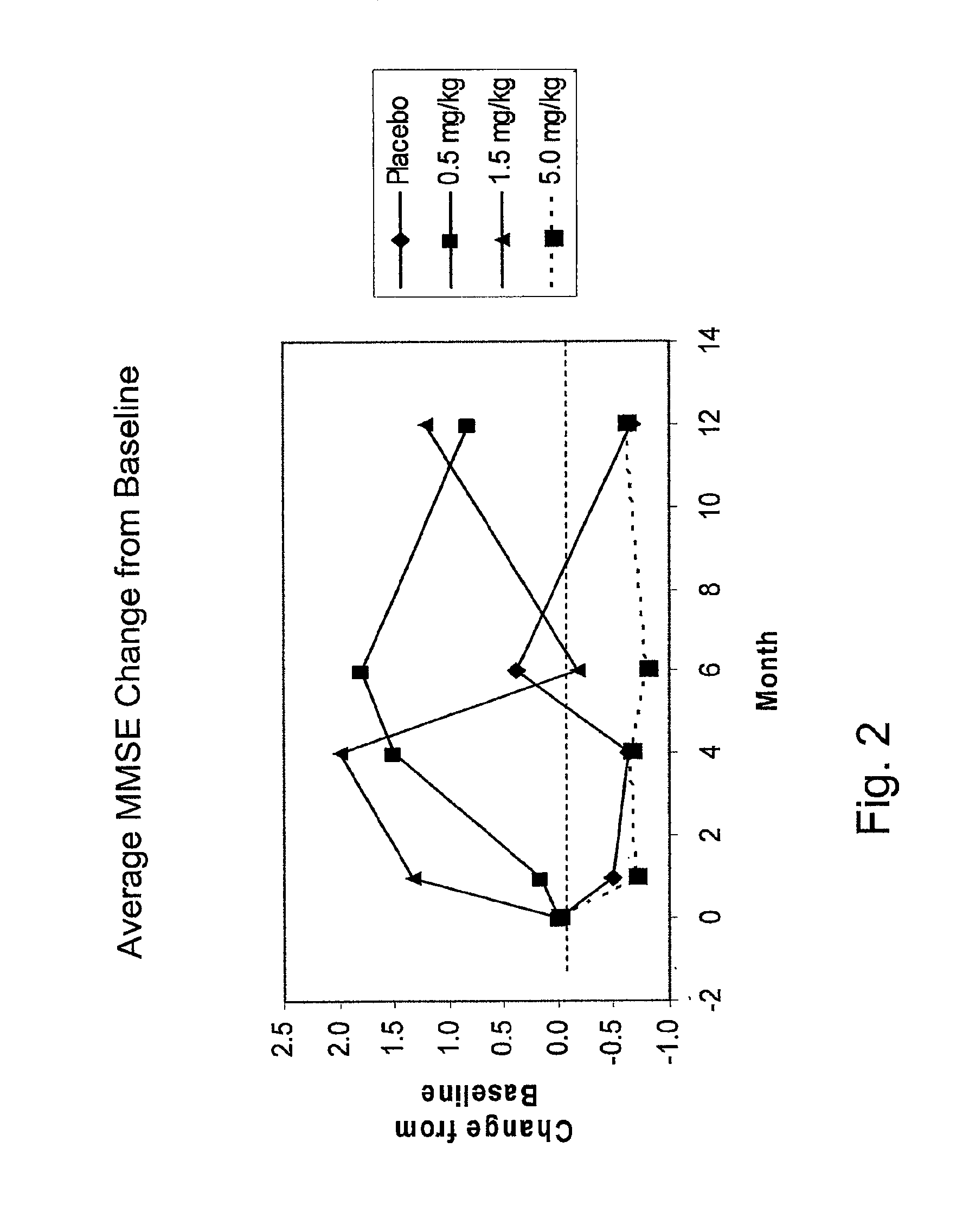Treatment of amyloidogenic diseases
a technology for amyloid and spleen, which is applied in the field of amyloidogenic diseases, can solve the problems of neuronal cell death and implausible therapeutic benefits
- Summary
- Abstract
- Description
- Claims
- Application Information
AI Technical Summary
Benefits of technology
Problems solved by technology
Method used
Image
Examples
example i
Prevention and Treatment of Human Subjects
[0224]Bapineuzumab (AAB-001) is a humanized monoclonal antibody to Aβ. The objective of this study is to determine the safety and tolerability of single doses of bapineuzumab in AD.
[0225]Methods: Randomized, double-blind, placebo-controlled single ascending dose trial of bapineuzumab infusion in patients with mild to moderate AD. Patients enrolled in the trial met all of the following criteria:[0226]1. Diagnosis of probable Alzheimer's disease (AD) according to the National Institute of Neurological and Communicative Disorders and Stroke-Alzheimer's disease and Related Disorders (NINCDS-ADRDA) criteria.[0227]2. Age from 50 to 87 years, inclusive.[0228]3. Mini-Mental Status Examination (MMSE) score of 14-26.[0229]4. Rosen Modified Hachinski Ischemic score≦4.[0230]5. Lives at home with appropriate caregiver capable of accompanying the patient on all clinic visits, or community dwelling with caregiver capable of accompanying the patient on all ...
example ii
Pharmacokinetic Study of AAB-001
[0263]The objective of this study is to determine human pharmacokinetics (PK) after intravenous administration of AAB-001.
[0264]Methods: Randomized, double-blind, placebo-controlled multiple ascending dose trial of AAB-001 administered intravenously. 6 doses of AAB-001 were administered intravenously q13 wk. There were four dose cohorts were 0.15, 0.5, 1.0 and 2.0 mg / kg.
[0265]Results: PK was predictable and dose-independent. PK-CL 0.05-0.06 mL / h / kg across all dose levels. Dose-proportional exposure. Very little accumulation with q13 wk IV dosing, although quantifiable pre-infusion concentrations at all dose levels. t½ ranged from 21-34 hours. At steady-state, Cavg after 0.5 mg / kg AAB-001 (i.e., ˜35 mg) ˜3.3 μg / mL. See FIG. 9. Cavg after 0.5 mg / kg AAB-001 of ˜3.3 μg / mL is close to the 3.7 μg / mL concentration found to be efficacious in PDAPP mice. FIG. 10 shows mean serum AAB-001 concentration vs. time profiles following intravenous administration of AA...
PUM
| Property | Measurement | Unit |
|---|---|---|
| concentration | aaaaa | aaaaa |
| concentration | aaaaa | aaaaa |
| concentration | aaaaa | aaaaa |
Abstract
Description
Claims
Application Information
 Login to View More
Login to View More - R&D
- Intellectual Property
- Life Sciences
- Materials
- Tech Scout
- Unparalleled Data Quality
- Higher Quality Content
- 60% Fewer Hallucinations
Browse by: Latest US Patents, China's latest patents, Technical Efficacy Thesaurus, Application Domain, Technology Topic, Popular Technical Reports.
© 2025 PatSnap. All rights reserved.Legal|Privacy policy|Modern Slavery Act Transparency Statement|Sitemap|About US| Contact US: help@patsnap.com



